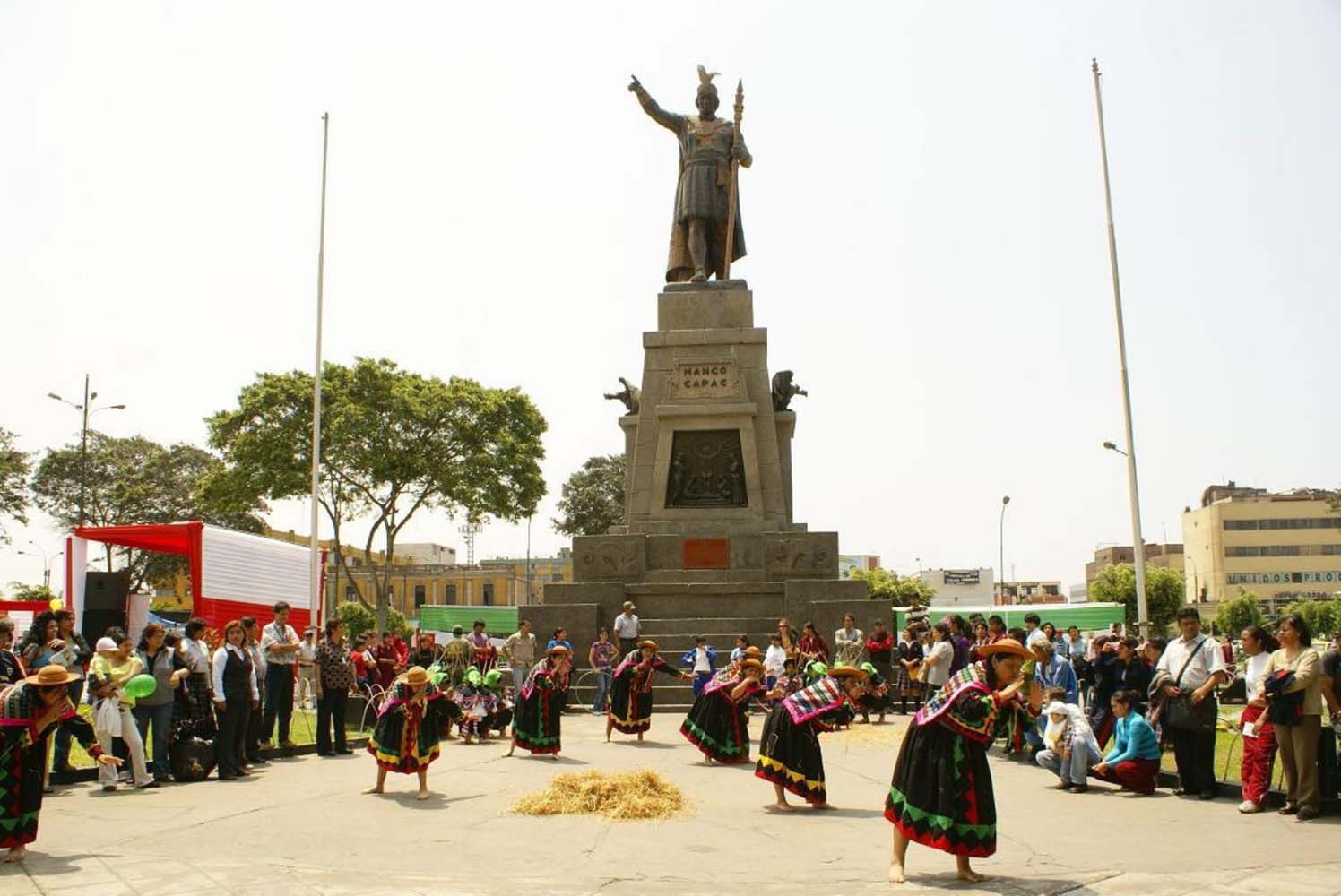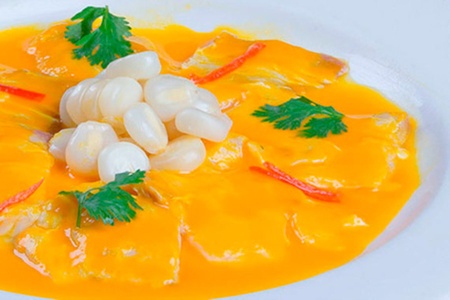On July 28, 2021, Peru celebrated 200 years of existence as an independent country. In 1976, the United States celebrated its bicentennial with festivities enhanced by the visit of Queen Elizabeth II, with fireworks and parades. The commemoration in Peru, with around 200 thousand people dead from Covid-19 and a society divided by the recent presidential elections, was very different. The country was not for parties.
However, life goes on. Broadening the perspective to go beyond the gloomy situation and not get lost in this tidal wave of conflicts and crossfire that the country has become, in order to face the future better equipped, is necessary.
There is no future without history, and in the 200 years of Peru's history the Nikkei community has had a significant presence in the last 122.
CONTRIBUTIONS TO THE PALATE AND HEALTH
It is very difficult for us inhabitants of the hyperconnected 21st century to imagine what was going through the minds of the 790 Japanese who were part of the first group of immigrants who arrived in Peru in 1899 when they were traveling by boat from Japan.
If for activities as simple as going to a restaurant or a cinema we first read reviews or reviews online, how can we conceive what it must have meant for them to undertake a journey of more than a month to a country they knew nothing about, completely different from the yours? Even a flight into outer space today has more certainty than the journey they made at the end of the last century.
What is possible to imagine is that those hundreds of young and middle-aged men, aged 20 to 45, were certain that they would return to their country. They traveled with four-year work contracts and the expectation of working, saving, and returning to Japan to resume their lives.
We already know that it was not like that. And that they, without knowing it or intending it, were the first shoulders on which the Peruvian Nikkei community was built, without whose presence the history of Peru today would be different.
When the history of Japanese immigration to Peru is reviewed and the spotlight shines on the contributions of the Nikkei community to the country, names such as the artists Tilsa Tsuchiya and Venancio Shinki, the writer José Watanabe or the businessman Carlos Chiyoteru Hiraoka shine.
However, beyond individual lights, collective creations stand out. And, perhaps, none as generous and high-profile as Nikkei cuisine. Although individuals such as Minoru Kunigami, Rosita Yimura or Humberto Sato stand out, its birth is the work of a community that made fusion an art.
Humberto Sato himself said it when he was pointed out as the master of Nikkei cuisine. The Nisei got off the pedestal where others placed him and attributed the merits to the collective: to the Issei, the generation to which his father, a native of Fukushima Prefecture, belonged, as well as to his children, who maintained the culinary legacy of their parents. and they enriched it with their own contributions.
The legacy today falls on the Sansei and subsequent generations, who are taking Nikkei cuisine to the world, internationalizing a cuisine that is not Japanese, as some still believe, but one of the richest aspects of the diverse and copious Peruvian gastronomy.
If the term “Nikkei” has achieved a certain transcendence outside the confines of the community, if it accumulates positive meanings even abroad, it is thanks to this cuisine that was born from the ingenuity and creativity of Japanese immigrants more than a century ago.
The contributions of the Nikkei community are appreciated not only by the palate or the stomach, but also by the health and spirit.
The Peruano Japonés polyclinic and the Centenario clinic ensure the health of a large number of people in Lima. The Peruvian Japanese Theater is one of the great artistic stages (theatrical plays, musical concerts, etc.) in the Peruvian capital. The Peruvian Japanese Cultural Center hosts numerous cultural activities, from Japan Cultural Week to book presentations, while the La Unión Stadium Association (AELU) is one of the main sports clubs in Peru.
These large infrastructure works were built with the original purpose of serving members of the community (AELU was founded by the Issei so that their young children could have a sports field) or based on certain Nikkei anniversaries (the Centenario clinic was born, for example, on the occasion of the 100th anniversary of Japanese immigration to Peru). However, they easily surpassed their original objective and today their reach is national. They are works that translate a community's vocation to service into actions.
A WAR WITH RESONANCES 50 YEARS LATER
The event that has had the greatest impact on the history of the Nikkei community in Peru is, without a doubt, the Second World War. It was the hardest hit in Latin America: deportation of around 1,800 people to internment camps in the United States, looting of hundreds of businesses, closure of institutions, schools, media outlets, etc.
The governments of the United States and Peru colluded to annihilate the prosperity that immigrants had achieved thanks to the strength of their arms and their determination. In addition to losing everything, they were expelled from Peruvian territory and imprisoned in another country without having committed any crime.
After the end of the war in 1945, the community quickly got to work. They were times of reconstruction. As an example, in 1953, just eight years later, the first stone of AELU was laid.
The community quickly turned the page. The plans were modified: there would be no return to Japan; Peru would be the definitive home.
The war was put aside from the Nikkei collective imagination, but not buried. Almost half a century later it was resurrected in memories when Alberto Fujimori ran for president of the country in 1990.
A large part of the community (probably the majority) opposed his candidacy, not for political or ideological reasons, but out of fear that a defective or bad Fujimori government would lead to reprisals or hostility against the Nikkei as during the war.
The fear increased because during the electoral campaign there were some anti-Nikkei acts (insults, preventing entry to businesses, etc.) by sectors of the Lima upper class. It seemed like history was repeating itself (albeit on a much smaller scale). The sector most resistant to the Fujimori candidate was the Issei, those who had suffered firsthand the effects of the war (their children were still young or had not been born).
In 1990, Fujimori could not be separated from the group from which he came. The Nisei engineer was not only an individual, but also a community. So much so that the good image of the Nikkei contributed to their victory.
31 years later, however, things have changed. His daughter, Keiko, who has run unsuccessfully for the presidency of Peru three times, is not associated with the community. The fate of this one and that of the former candidate travel through different lanes.
FROM ONE CENTENARY TO ANOTHER
In 1921, Peru celebrated one hundred years of its independence from Spain. The Japanese colony decided to join the celebrations by gifting the country that offered them land to build their future with a statue of Manco Cápac, a mythical character from the Inca empire. The monument was inaugurated five years later in a plaza in Lima, with the presence of the president of Peru.

A century later, Japanese descendants commemorate the bicentennial of Peru's independence as an intrinsic part of the country, no longer as an enclave that offers a gift to the land that hosts it. Nikkei has its origin in Japan, but it is Peru.
© 2021 Enrique Higa







